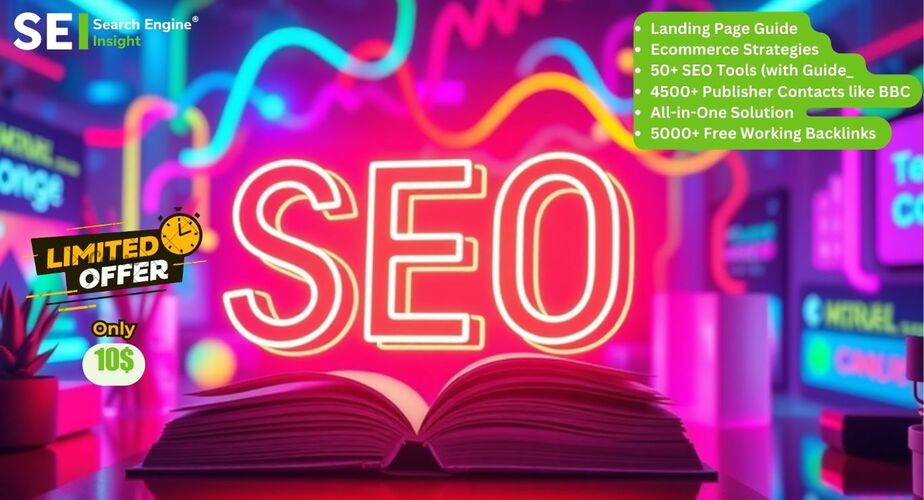Competitive Intelligence: How it Shapes Marketing Decisions
Having competitors in your space is a good validation that the market exists for your product. However, attempting to enter a market without understanding who your competitors are, how they acquire new customers, or how they position themselves would be extremely risky.
According to a study conducted by Professional Programs, 30,000 new products are introduced each year, and 95% of them fail.
There are various reasons for this failure, and one of them is however not knowing the competitive landscape.
Competitor analysis is important before launching your product. Not only does this tell you who you are up against, but also can help you set some realistic goals.
Knowing competitor’s products, how they price, and the campaigns they set for different goals can help you spot the gaps and thus find ways your brand can stand out in the crowd.
This exercise helps you understand the strengths your competitors have developed over the years as a brand. Seeing where they excel pushes you to raise your game in those areas.
And their weaknesses?
Those are opportunities for you to swoop in and outshine them by promoting what makes your solution better or otherwise creating a GTM for your brand.
Understanding the Scope of Competitive Intelligence
Competitive intelligence is a broad field that encompasses various types of insights, each offering different & valuable perspectives. To truly appreciate its scope, it’s essential to know the different types of competitive intelligence and the sources from which you can gather this crucial information.
Types of Competitive Intelligence
Depending upon how the intelligence is gained from the competitors, we can divide them into two parts. Every bit and piece of knowledge that you gain from your competitor would have some significance and depending upon how this will impact they are seperated:
- Strategic – This type of intelligence helps a brand with its long-term strategy. Like knowing the Go-To-Market Strategy, key risks involved, market nature over time, and how potential customers adapt.
- Tactical – This type of intelligence helps a brand with its short-term strategy. For example, setting up quarterly goals, and catering to seasonal demands.
To clarify, the terms “long-term” and “short-term” refer to the alignment with business goals, not the duration required for execution.
Now that we know its type, we would be willing to know the source to capture this information.
Time to get to work!!
There are different sources from which you can capture information. Here are a few of those:-
a). Public Records: These include financial reports, patent filings, and regulatory documents.
- How they help: Public records provide a wealth of information about a competitor’s financial health, innovations, and compliance status. This data can help you understand their financial stability, new product developments, and regulatory challenges, allowing you to anticipate their moves and adjust your strategy accordingly.
b). Market Analysis Reports: Industry reports and market research studies offer insights into market trends, competitive landscapes, and consumer behavior.
- How they help: These reports are invaluable for making informed strategic decisions. They help you understand the broader market context, identify emerging trends, and benchmark your performance against industry standards.
c). Social Media: Platforms like LinkedIn, Twitter, and Facebook can reveal a lot about a competitor’s marketing strategies, customer interactions, and public perception.
- How they help: Monitoring social media activity helps you stay updated on your competitors’ latest moves, customer feedback, and brand reputation. This real-time information can inform your marketing tactics and customer engagement strategies.
d). News and Publications: Trade journals, press releases, and news articles often contain updates on competitor activities, industry developments, and market conditions.
- How they help: Regularly reviewing these sources ensures you stay informed about the latest happenings in your industry. They can provide insights into new product launches, strategic partnerships, and market disruptions.
e). Customer Feedback and Reviews: Analyzing customer reviews and feedback on various platforms provides insights into competitor strengths and weaknesses from the customers’ perspective.
- How they help: This can help you identify areas for improvement in your products or services. Understanding what customers like or dislike about your competitors can guide your product development and customer service strategies.
f). Websites and Marketing Materials: Reviewing your competitors’ websites, blogs, and marketing materials can provide valuable insights into their product offerings, value propositions, and marketing strategies.
- How they help: By analyzing how competitors present themselves and communicate with their audience, you can refine your branding and marketing efforts. This can help you identify unique selling points and differentiate your brand in the market.
Remember that all the information from these sources works hand in hand. No single source can tell you the complete story of a brand, and relying on just one can leave you in the dark.
Depending on the brand and industry you are analyzing, more or fewer sources might be available. However, capturing as many sources as possible is crucial and ensuring that the information you rely on is updated and accurate.
Industries Where Competitor Intelligence Matters The Most
Every industry can benefit from competitor intelligence, but some are particularly reliant on this data to operate effectively.
These industries require daily insights to stay competitive and make informed decisions. Here, we’ve listed some of the top industries where competitive intelligence is most crucial.
Technology and Innovation Driven Sectors
Technology and innovation-driven industries have a constant challenge to keep up with their competitors. Companies in industry software development, hardware manufacturers, and tech startups need to keep a close watch on emerging technologies, market trends, and competitor activities.
This data helps these companies understand what their rivals are developing and potential market disruptions.
For example, software companies track new features or updates introduced by competitors. With this information, they can anticipate customer needs, develop better products, and therefore stay relevant.
These companies also look at patent filings and financial reports to gauge their competitors’ innovation capabilities and financial health, guiding their own R&D investments and market strategies.
Consumer Goods and Retail
Another industry that has the critical usage of competitor intelligence is consumer goods and retail. This industry is highly competitive, with companies constantly trying to capture market share.
Intelligence in this industry is essential for understanding consumer behavior, market trends, sentiments, and competitor strategies. Retailers use this data to optimize their product offerings, pricing, and marketing campaigns to attract and keep customers.
Let’s take an example to better understand this. A retail company analyzes competitor pricing and promotions to adjust its strategies.
By understanding the strengths and weaknesses of their close competitors, retailers try to find untapped opportunities in the market and capitalize on new trends. Additionally, consumer feedback and reviews provide insights into competitor products, helping companies improve their own offerings and customer satisfaction.
Healthcare and Pharmaceutical
The Global projected revenue in the Pharmaceuticals market is estimated to reach US$1,156.00bn in 2024 with a CAGR of 5.9%. (source). This means that the industry is on a huge growth and would expect new players to join in to better cater to the huge demand.
To stay ahead, healthcare and pharmaceutical companies will focus more on competitive intelligence. These companies use this data for drug approvals, and new treatments, helping them anticipate regulatory changes and optimize their drug development processes.
For example, Pharmsight provides marketing intelligence and helps track competitor activity including clinical trials/promotions to gauge the impact of new drugs entering the market. Analyzing patent filings and scientific publications, helping to identify emerging technologies and potential partnerships. Healthcare providers also use competitive intelligence every day to understand unmet needs, identify standards of care, and adopt best practices from leading institutions.
Hospitality and Airline
The hospitality and airline industries must constantly adapt to changing customer preferences and market conditions. Hotels, airlines, and travel agencies rely on competitive intelligence to customize their services, enhance customer experiences, and optimize pricing strategies.
Many airlines utilize flight price comparison API to monitor competitor pricing in real time. This allows them to adjust fares dynamically and remain competitive. Hotels analyze competitor occupancy rates, customer reviews, and promotional offers to refine their pricing models and services. Using this data, hotels can differentiate themselves, attract more customers, and build lasting customer loyalty.
Beyond pricing, competitive intelligence in these industries helps businesses understand seasonal demands, customer satisfaction levels, and emerging travel trends. For example, a hotel chain might discover a growing interest in eco-friendly accommodations and adjust its offerings accordingly. Similarly, airlines might identify new popular destinations and create targeted marketing campaigns to attract travelers.
These are the few industries that use competitive intelligence the most. However, to build a marketing strategy you need to use & analyze the data collected via this thorough process. We are going to discuss it in our next section.
How to Incorporate Competitive Intelligence Data into Marketing Strategy
If you have read up to this point, this means that CI is important for you. You now know why competitor intelligence is done, the different sources to collect data, and some industries that heavily use this data.
But how do you use this data collectively & effectively in your marketing strategy?
According to a study conducted by Leftronic, 88% of the data companies collect goes to waste & they analyze only 12% of the whole data collected. This is where you can catch them up and ensure the proper utilization of more data in your marketing efforts.
We have tried to create a road map for you to better understand this process. Let’s understand this better by bifurcating this into smaller sections.
1. Align CI Findings with Marketing Goals
Aligning competitive intelligence with your marketing goals ensures that the insights you gather are directly contributing to your business objectives. Here’s how to do it:
- Identify Key Metrics: Start by identifying the key metrics that are most important for your marketing goals. These might include market share, customer acquisition, brand awareness, or sales growth. Knowing which metrics matter most will help you focus your CI efforts.
- Set Clear Objectives: Define clear objectives for what you want to achieve with the CI data. For example, if your goal is to increase market share, focus on identifying gaps in competitors’ offerings that you can fill. Clear objectives help in directing your efforts and resources effectively.
- Map CI Insights to Goals: Match the competitive insights to your marketing objectives. For instance, if a competitor is gaining traction with a specific product feature, consider how you can incorporate or improve on that feature in your offerings. This alignment ensures that your marketing strategies are informed by real-world and fresh data.
2. Develop Marketing Strategies Based on Competitive Analysis
Using competitive intelligence to shape your marketing strategies involves several key steps. We have listed out some points to help you develop your marketing strategy.
- Product Positioning: Use CI to understand how competitors position their products. Identify their strengths and weaknesses to find your unique selling proposition (USP). For example, if competitors focus on affordability, you might emphasize quality or innovation.
Example Table for Product Positioning:
| Competitor | Product Feature | Strength | Weakness | Your Positioning |
| Competitor A | Affordable Price | Low Cost | Lower Quality | High Quality |
| Competitor B | Innovative Design | Advanced Features | High Price | Affordable Innovation |
By analyzing the above table, you can see where your product can stand out in the market.
- Pricing Strategies: Analyze competitors’ pricing to determine the best approach for your products. If competitors are cutting prices, consider offering added value or superior service instead of just lowering prices.
Example Table for Pricing Strategies:
| Competitor | Price Point | Value Proposition | Your Strategy |
| Competitor A | $50 | Basic Features | $55 with Premium Support |
| Competitor B | $70 | Advanced Features | $60 with Extra Features |
This table helps you visualize how you can position your pricing strategy against competitors.
- Marketing Channels: Identify which marketing channels your competitors are using successfully. If they are seeing good engagement on social media, consider enhancing your social media presence with targeted campaigns. For example, if a competitor is gaining traction with influencer partnerships, explore similar opportunities for your brand, since this is something that is proven and working.
Continuously Integrate New Intelligence into Marketing Plans
Your competitors are growing continuously and so is the data which can be studied. Intelligence is a long-term and evolving investment.
To stay competitive, you need to keep updating your strategies with new intelligence. Here are some tips:
- Regular Monitoring: Set up a schedule to regularly monitor your competitors. Use tools and platforms that provide real-time data on their activities. Regular monitoring ensures that you are always aware of market changes.
- Update Plans Frequently: Add new findings to your marketing plans regularly. Adjust your strategies based on the latest market conditions and competitor moves. For example, reassess your positioning and pricing strategies every six months.
- Team Collaboration: Ensure that your marketing team collaborates closely with the CI team. Regular meetings and updates can help integrate new insights seamlessly. Effective collaboration ensures that everyone is on the same page and can respond quickly to new information.
- Flexible Strategies: Keep your marketing strategies flexible to adapt to new information quickly. Be ready to pivot when new opportunities or threats arise. Flexibility allows you to staying responsive to market dynamics, and maintaining a competitive edge.
The Future of Competitive Intelligence in Marketing
Competitive intelligence (CI) is always changing to meet the needs of the market. As businesses strive to stay ahead of their competitors, they must keep up with new trends and tools. This section will discuss upcoming trends in CI tools and methods, as well as the impact of AI and machine learning on CI.
Predictions on Emerging Trends in CI Tools and Methodologies
The way we gather and analyze competitive intelligence is expected to undergo significant changes. New tools and methods will emerge in the coming years, making data collection more streamlined and insights more actionable.
Businesses will need to adopt these advancements to stay competitive. For instance, we can expect tools that offer more real-time data and better integration with other business systems, allowing for quicker decision-making.
The Role of AI and Machine Learning in Shaping the Future of CI
Artificial intelligence (AI) and machine learning are poised to transform competitive intelligence. These technologies can handle large volumes of data more efficiently than traditional methods. They can identify patterns and trends that might not be immediately obvious to humans.
This means businesses can gain deeper insights faster, helping them make better decisions. For example, AI can predict competitor moves or market shifts based on historical data, giving companies a strategic advantage.
Conclusion
Investing in competitive intelligence practices is essential for any business looking to maintain a competitive edge. It’s not just about collecting data, but about turning that data into actionable insights that drive strategic decisions. As the market continues to change, those who prioritize and invest in CI will be better equipped to adapt and thrive.
By integrating competitive intelligence into your marketing strategy, you ensure that your business is always one step ahead. Embrace these practices and stay vigilant, as this will be key to your sustained success in a competitive landscape.




